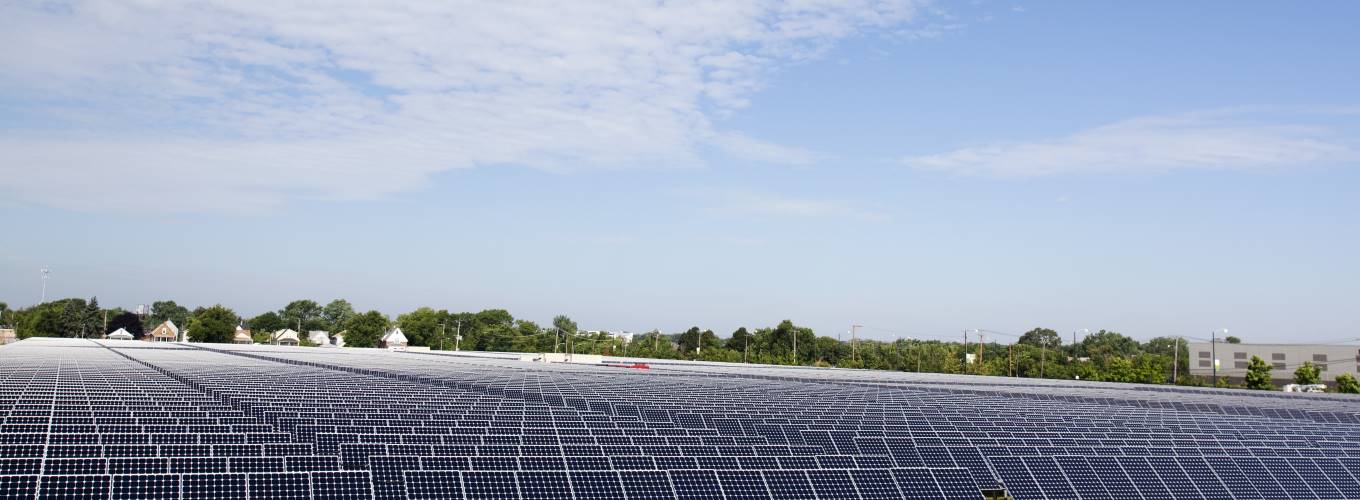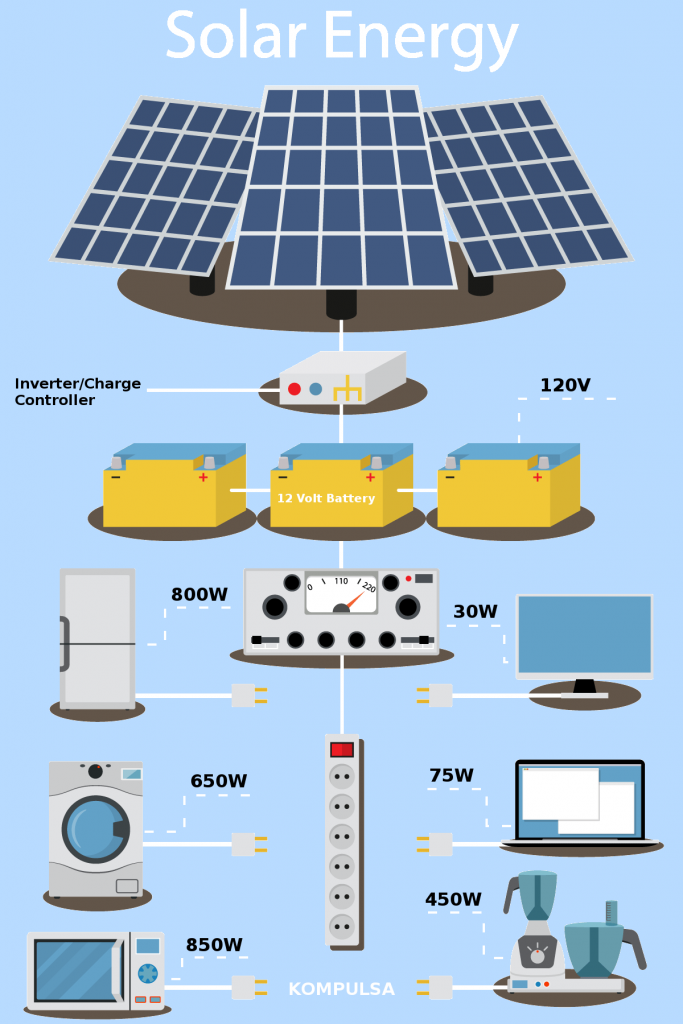I will attempt to cover everything you need to know about switching to solar energy in this article, including the questions raised by critics about it’s viability.
There are various types of solar energy systems, but this article pertains to photovoltaic solar panels (these are the most common type apart from the solar water heaters, and they generate electricity). The points made are not in order of importance.

Currency: USD.
1a. The Cost Of Solar Systems – Is Solar Energy Financially Viable?
Solar panels are well-known for their high initial cost, and high installation cost. A solar system can easily cost you $10,000 (USD) to $20,000 for the average middle-class home (not much more or less for most homes outside the U.S.) including all expenses.
A solar systems’ value to you is determined partly by your electricity rates. If your electricity rate is $0.12 USD/kWh, a $20,000 system could take 17 years to pay you back. If your electricity rate is twice that ($0.24/kWh, which is common in many countries), your solar panels could pay for themselves in less than 9 years.
The latter case can be easily justified, especially if your electricity rates have been on the rise (and they are in many areas). For example, i’ve seen rates as high as $0.45/kWh. People with such high electricity rates might as well take the plunge and get solar panels.
Fortunately, people who install their own solar panels can save a lot of money by installing them themselves, as more than half of the average solar systems’ cost is installation fees, including ‘soft costs‘.
1b. Will Solar Loans Drive Up The Cost Of Solar Systems?
There is a right and wrong way to do everything. If you take out a loan to pay for solar panels, there’s a good chance that you’ll totally eliminate the financial benefit they provide due to interest charges.
Another way to reduce the cost of solar systems is to call around for quotes, then tell solar installers’ competitors how much others are charging to see if they’ll bring their prices down. Large businesses especially can use this to their advantage, as they require many solar panels.
For example: A large store chain like IKEA (which purchases thousands of solar panels) can enjoy not only a great quantity discount, but they can use their large projects to their advantage when negotiating prices with installers. Every installer wants big jobs like that. They generate the most revenue, so they will bend a little to get your business.
2a. Reliability, And Versatility – Is Solar Power Reliable?
When people inquire (or argue) about the viability of solar systems, their arguments are usually centered around money. Financial savings are only one of the many benefits of solar panels!
If you purchased a diesel or gas-fueled generator as a backup for grid power outages, that could and should be considered an expense associated with grid power, as it does go down periodically, and in virtually every country. Solar panels are among the most reliable generators, as they can last 30 years without maintenance. The
They don’t blow gaskets, they don’t have any worse spark plugs to replace, no belts to replace, and they contain no moving parts. This means that solar panels are solid-state devices. A perk of solid-state devices is the fact that they are silent (with few exceptions). The reliability of solar systems on the other hand, is a different story (although still on par with or better than gas-powered generators).
If you’re a business that cannot afford a power outage, or would lose money because of one (this applies to most businesses), you could benefit from the increased reliability that battery-powered solar systems provide. For example, some businesses make more money in a minute than the average person makes in a day.
Amazon is a good example of such a business. If Amazon was taken down by a power outage, they could lose millions of dollars per hour (their revenue was approximately $10 million per hour in 2014).
If I was to guess, Amazon utilizes UPS systems (most other businesses i’ve seen do) to prevent such a disaster. UPS means Uninterruptable Power Supply. UPS systems utilize batteries, chargers, and inverters (which are the bulk of the cost of an off-grid solar system, so such a system could back up the servers without using an expensive UPS) to keep businesses’ servers up and running 24/7. Unfortunately, the batteries do cost a pretty penny.
UPS systems often utilize lead-acid batteries, which usually cost up to $0.25/Wh, or $250/kWh. Add the cost of UPS maintenance and replacement, and you’ll have a big bill on your hands. My main point is: An off-grid solar system (or a grid-tie solar system with battery backup) utilizes the same components (inverter, battery, battery management system/charger) as a UPS would, except it also requires solar panels (which cost $1 to $3 per watt of generation capacity).
UPS systems usually only provide backup power for minutes at a time (until a backup generator kicks in, and backup generators not only have to be maintained, but they are expensive to operate). Purchasing a grid-tie solar system with battery backup could provide unparalleled reliability and save some money on electricity/backup generator gas.
Versatility: The versatility of solar panels enable you to utilize your space more efficiently than you would if using gas-powered generators or a UPS system, despite the fact that solar panels are physically larger than both. Why? Solar panels are thin, and built so they can be installed on rooftops which wouldn’t otherwise be used to store anything, plus they can be used to build shaded car parking spaces (that way, they wouldn’t really cost you any of your usable space), as you or your customers could just park under them.
Businesses could also charge visitors to recharge their plug-in hybrid or electric cars using surplus power generated by their solar panels (if any). They could set up extra solar panels this way to make a profit, and provide surplus power if few or no visitors are recharging their cars. This surplus energy can be used to recharge their backup batteries.
If using them as a shade/roof for your cars in your driveway, you will also save a bit of money on car maintenance (your paint job and plastic interior parts will last longer).
2b. You Can Turn Solar Panels Into A Source Of Revenue
What’s one thing that everyone needs? Power! In some areas, you can install net metering systems that will allow you to sell solar power. You don’t need any big, noisy industrial equipment, just extra space on your roof. In the United States, you can usually sell solar power to the grid at rates that will fully offset your electric bill (if the system is large enough to generate more power than you use), or even make you some extra money.
We’re in the 21st century, there are now so many ways for individuals to make themselves money form the comfort of their own homes. In this case, you can make a revenue-generating investment without worrying about stocks! Of course, the initial cost is high, but it’s definitely an opportunity to consider.
3. Solar Energy Is Greener Than Most Power Sources
Some people refer to those who care about the environment as ‘bleeding-heart liberals’, which is just a manipulative way to demean people who actually have a conscience. Despite this negative attitude towards those who care about the environment. The majority of people at least support transitioning to a more eco-conscious world, and it’s not just the liberals.
Despite containing the micrometer-thin wafer of toxic chemicals that they do, solar panels are still one of the most environmentally sound ways to generate electricity, and they last an average of 30 years (without replacing any parts). That can’t be said about any of the fossil-fueled generators, all of which need parts at least every few years.
Fossil-fueled power plants, including gasoline, diesel, and especially coal, emit pollutants, which cause lung cancer (such as soot), toxic heavy metals that cause birth defects and cognitive issues, as well as other toxic chemicals such as benzene. Coal power plants are the large-scale equivalent of cigarettes.
Transitioning from fossil fuels to renewable energy sources isn’t just ‘cute’, as some would call it. It’s a necessity. Climate change is looming, and lung cancer-causing air pollution isn’t going to stop without weaning ourselves off fossil fuels. We all share the same planet, and therefore share the same responsibility to take care of it.
Some People Will Advise Against Switching To Solar Power For Environmental Reasons
Opponents of solar power often tell people that solar systems won’t help the environment because they require gas backup from the grid, and that backup generators have to run all the time to sustain the power supply. There are two problems with this claim:
- Using everyday energy storage technology (such as batteries), no gas backup is required.
- The backup gas generators mentioned don’t run all the time. Hydroelectric as well as gas peaking power plants can throttle up and down, or switch on and off when needed (in a matter of minutes).
- To be fair: Coal power plants rely on gas backup because they take hours to start up (this is the price one pays for using steam engines).
Opponents also claim that solar panels aren’t capable of meeting electricity demand because they are an intermittent source of electricity. Solar panels are variable, not intermittent, so they don’t stop generating electricity until nightfall, which is fully predictable, rendering it a non-issue.
As for their ability to meet electricity demand — They can do it using energy storage. Regardless of how many clouds pass over solar panels, energy storage can provide a fully consistent power supply around the clock. It doesn’t matter how much the rate of solar power generation fluctuates.
How To Get Started With Solar Power
The initial cost of solar systems is high, but fortunately, solar panels of any size can be purchased. That means you can get a feel for solar panels by purchasing a 20-watt solar panel for about $60, a 12 Ah UPS battery, and a $30 inverter. You can set up an outside light with that, and monitor it to see how solar systems handle weather variations, etc. However, a solar system installer can tell you what you need to know about that.
Here’s an infographic illustrating how off-grid solar systems work.





